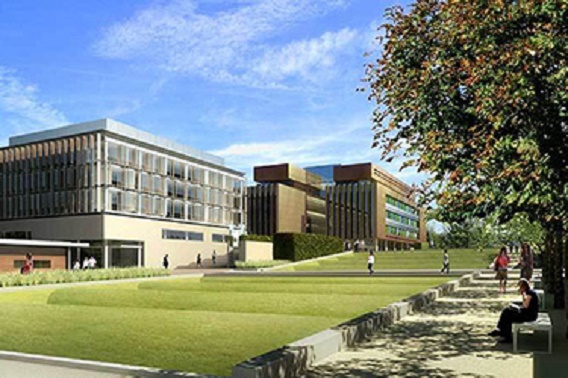University of Southampton: Sustaining world-leading undergraduate geological mapping skills during a pandemic
A five-week independent mapping project is a rite of passage for most third-year geology students. It’s also a core part of degree accreditation by the Geological Society of London.
But the ongoing COVID-19 crisis has meant that students are unable to access the usual international fieldwork locations in countries including Spain and Cyprus.
Rather than seeing this as a negative, staff at the University of Southampton have used the situation as an opportunity to reboot the field experience to align with the rapidly evolving geospatial needs of geoscience agencies around the world.
“The result is a high-quality hybrid mapping project that incorporates sophisticated geospatial analysis coupled with local fieldwork”, said Dr Tom Gernon, an Associate Professor of Earth Science at the University and coordinator of the module. “We end up with the best of both worlds: our students receive training in using next-generation digital mapping technology, whilst also gaining the essential hands-on experience in surveying and taking measurements in the field”.
A unique part of the new project is training in the use of Geographic Information Systems (GIS) to analyse diverse sets of high-resolution geospatial data acquired along this stretch of coastline over the last two decades. The University’s Professor Justin Dix, an expert in near surface imaging of the seabed and coastline, has previously utilised and interpreted these data in research published in international scientific journals, providing a firm foundation for the new teaching applications. Prof Dix commented that the “successful analysis and interpretation of such data sets is increasingly recognised as key to solving the major societal challenges of the 21st century. These include overcoming the engineering challenges in deploying renewable energy technology like windfarms on the seabed, to exploring for critical metals essential for green technology and required to reach net-zero emissions”.
Geological features of the Jurassic Coast.
Student projects focus on geological features of the Jurassic Coast.
During the course, the Southampton students have benefitted from weekly training sessions on GIS mapping techniques, as well as small group advisory meetings with a dedicated supervisor (Drs Matter, Taylor and Bohaty). They have also interacted virtually with world-leading scientists from both the global mining company, Anglo American PLC and engineering company, Atkins, who described their ongoing GIS projects around the globe and underscored the commercial advantages of integrating GIS data analysis and field-based measurements, precisely as the Southampton students are doing. With the input of colleagues from the Environmental Sensing Group in the School of Geography at Southampton, the students have also undertaken training in high-resolution mapping using drones within their areas.
The cohort also received special lectures from Emeritus Professor David Sanderson at the University, a world-renowned structural geologist who applies innovative tools including drone-based mapping to understand how tectonic faults work. Already familiar with his seminal research on the geometry of fault systems, the students fully appreciated the in-depth knowledge, experience, and enthusiasm that Prof Sanderson brought to the table. Collectively, all this experience has taken their abilities in mapping and spatial analysis to the next level.
Some of the student participants, including Honor James (BSc Geology) have opted to use big data sets acquired using airborne based Light Detection and Ranging (LIDAR) sensing technology, to quantitatively map historic landslides along the coastline. “It’s amazing to have the opportunity to survey and understand the causes of hazardous slope failures. Over the past year, I’ve benefitted massively from training in GIS-based mapping, and my supervisors have been very supportive and flexible. Despite the challenges faced this year they swiftly restructured the module in a way that is clear, organised and transparent. The skills we’ve gained through the projects equip us well for industry and further study, and have left us with a strong understanding of how modern, remote sensing-based geological mapping works. It’s also beneficial to gain unique integrated field experience”.
“We’re incredibly fortunate that we can take advantage of our location near the Jurassic Coast UNESCO World Heritage Site” said Professor John Marshall, Director of the Undergraduate Geology Programme at the University. “This region is practically on our doorstep and exposes superb rock sequences that accumulated about 200-66 million years ago during the age of the dinosaurs”. Prof Marshall added that a key factor in de-risking the fieldwork undertaken in the early autumn was the University establishing its own COVID-19 testing scheme for students and staff. This was based on a weekly LAMP spit test with results typically returned within 12 hours enabling the University to identify cases and monitor any potential outbreak. Together with the development of rigorous safety protocols including face coverings and social distancing, this local testing initiative gave the team the confidence to undertake COVID secure days trips.
So, the pandemic has given the Southampton team the opportunity to redesign how they deliver geospatial skills that will be increasingly important in the coming decades. Prof Dix said, “From our discussions with industry stakeholders, we’re certain that these skills will only boost our students’ employability in the long-term”.
“That’s one of the reasons why we’re determined to retain these innovations in our field teaching, and we look forward to incorporating them into other regions, both at home and overseas”, Dr Gernon added.

